Human symbolism includes body parts such as hands, fingers and eyes as well as symbols relating to an occupation, hobby or human condition.

Bed
A bed is a denial of death; “She is not dead, but sleepeth.” “Cradle Graves” are making a come back from the Victorian era as a convenient place to plant flowers and are in use for children and adults.

Boot
A boot on a grave probably represents a cowboy of sorts. They may represent the loss of a child.
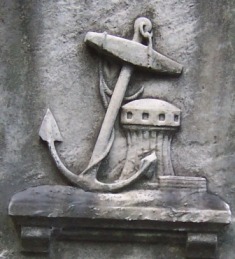
Buoy
A Buoy is generally a symbol of a mariner.
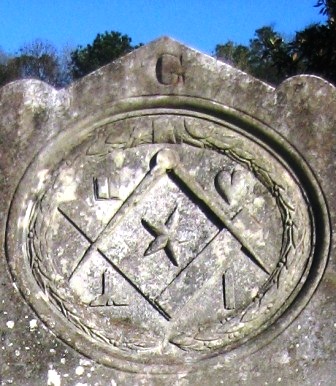
Compass
A compass is typically represents a Mason. A compass on a Coat of Arms or Family Crest represents “direction.”

Crest/Coat of Arms
Family Crests/Coat of Arms are sometimes found on tombstones with incredible detail. The crest at left is that of Bartholomew Gedney and is in the King’s Chapel Burying Ground in Boston, Massachusetts.
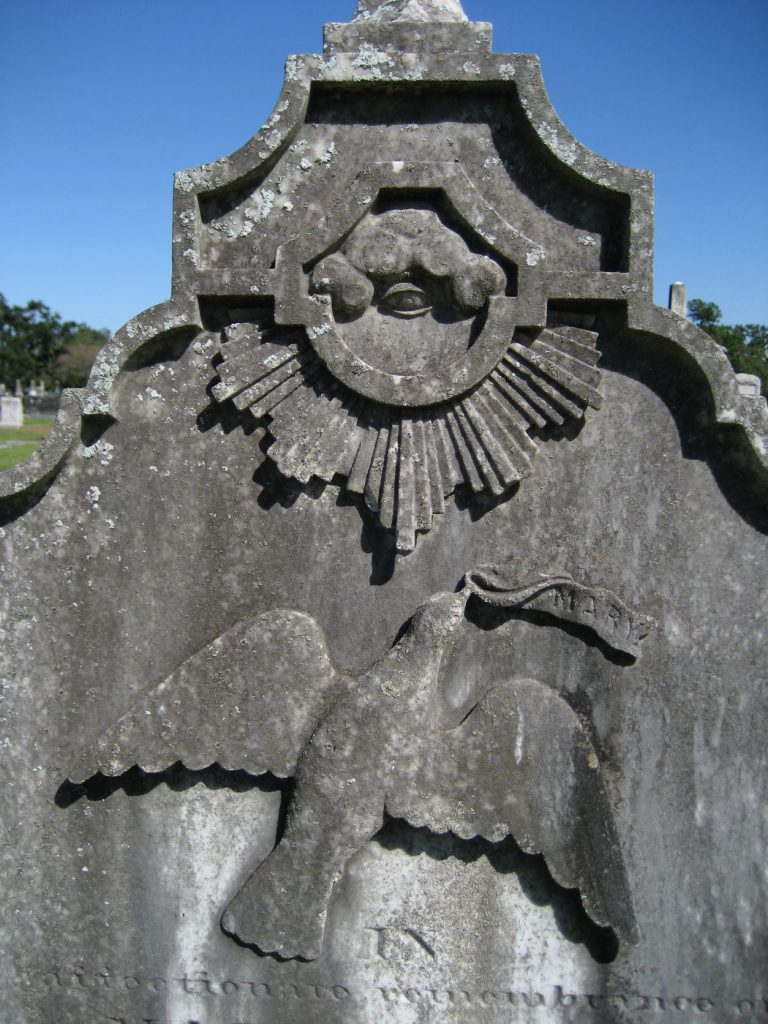
Eye/Eye of Ra
The Eye is a metaphor for the source of creation – the Eye of God. Eye with a pyramid: Masonic representation of the Great Architect of the Universe. The Eye of Ra represents the right eye of the Egyptian Falcon God Horus and was associated with the Sun God Ra.
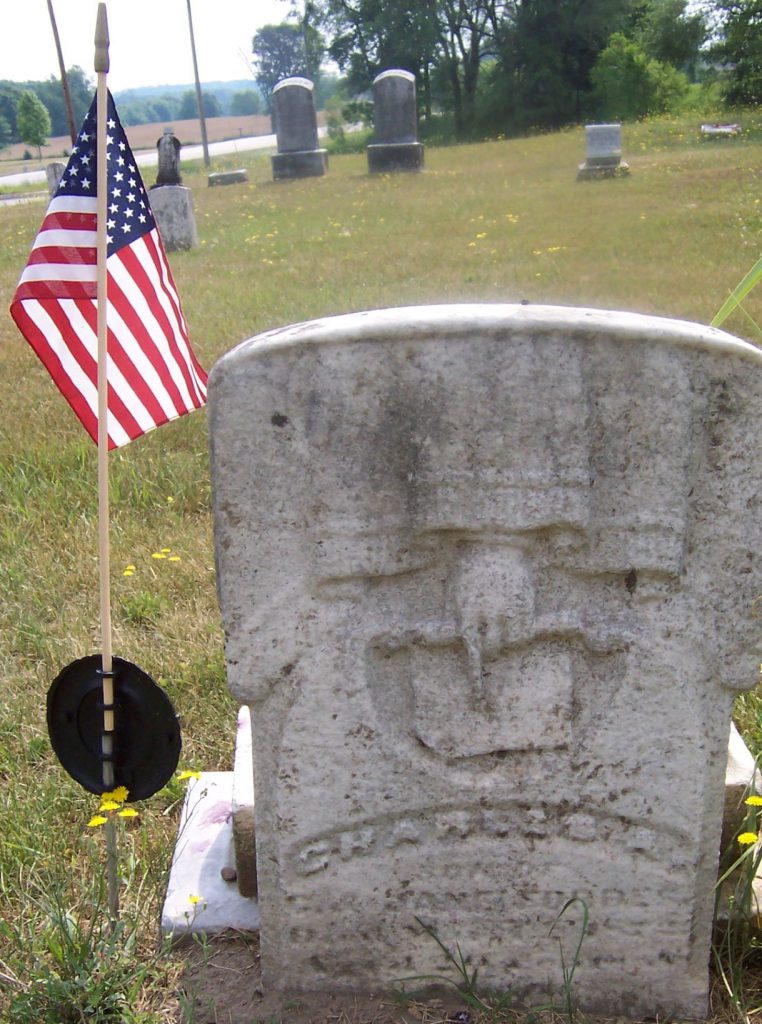
Finger Pointing Down
Calling the earth to witness. The Deceased has been chosen by God. This person may have had a sudden death from an accident or illness.
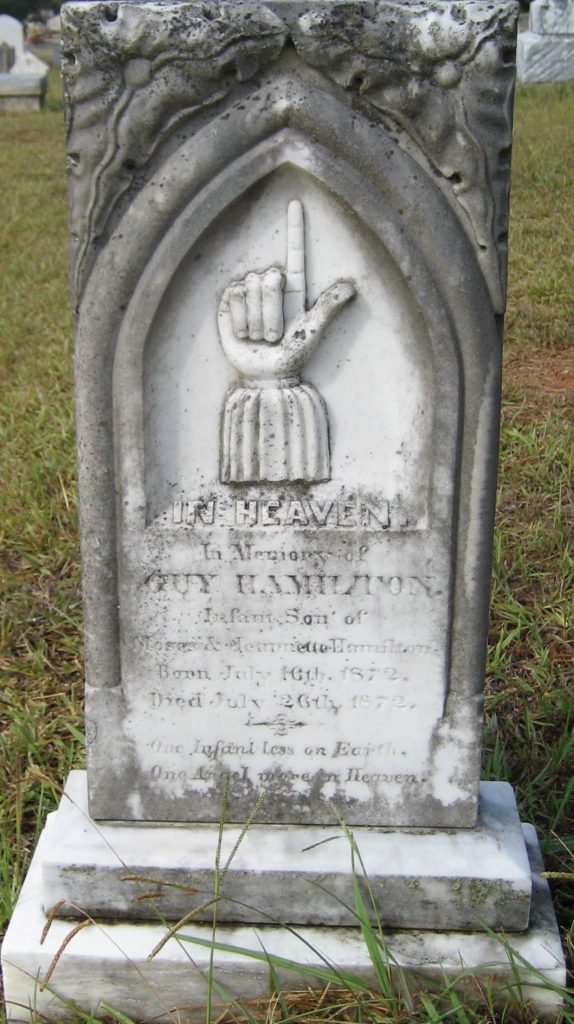
Finger Pointing Up
Pathway to heaven, heavenly reward, the soul has risen to Heaven.
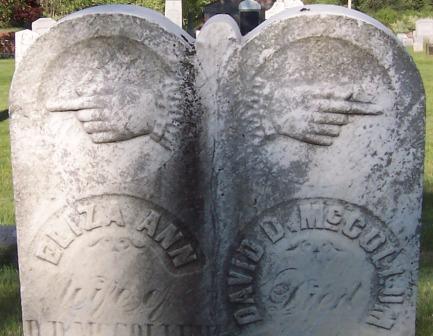
Finger Pointing Left or Right
The pointing fingers of this couple in the Lodi Cemetery in Saline, Michigan is unusual. One is pointing at their parent and one is pointing at their child. According to Laurie Taylor, Admin for Facebook Group Grave Topics, the fingers are called “manicules” which are the Medieval equivalent of today’s highlighters.

Hands
Hands are sometimes seen on tombstones simply holding things, such as flowers or patting a dog.
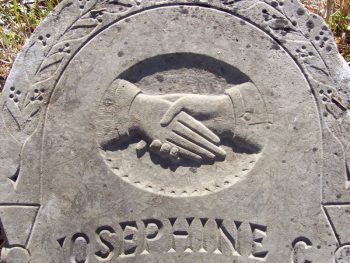
Hands Clasped
Two hands clasping signifies a union. The sleeves may be both masculine and feminine, indicating marriage. A finger on either hand may be pointing down or up. When the hands are clasped and the index finger of one hand points down, it means this person was a member of the Masonic Order. If both hands point their index fingers, then the spouse was a mason as well; if female, the Order of the Eastern Star.
.
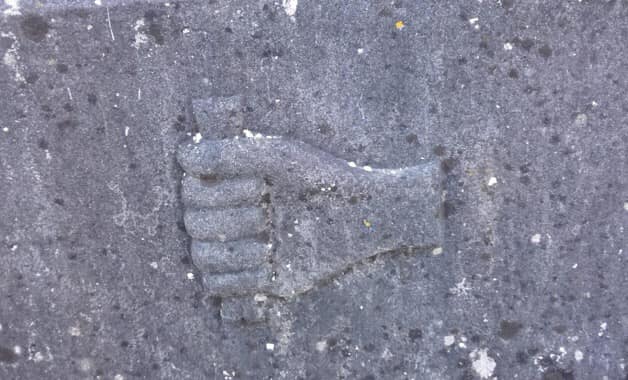
Hand Holding a Bone
A hand holding a bone represents an occupation called a Bonesetter. The bonesetter was typically a local and not a physician, and were used to reset a bone. Bonesetters were the main providers of joint manipulation before chiropractors.
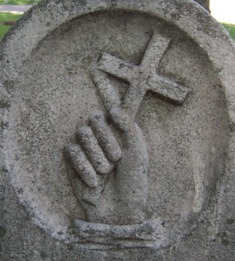
Hand Holding a Cross
A hand holding a cross symbolizes resurrection and the eternal life of the soul.

Hand Holding a Heart
The heart represents charity and generosity. Often associated with the Independent Order of the Odd Fellows, if shown with three chain links.

Hand with Cloud – Hand of God
A hand with a cloud represents the hand of God.

Hands–Cohen
‘Cohen hands’ is used when the Kohanim bless the congregation in synagogue. This symbol may only be used for a deceased male Cohen. The positioning of the hands look a bit like Spock hands.
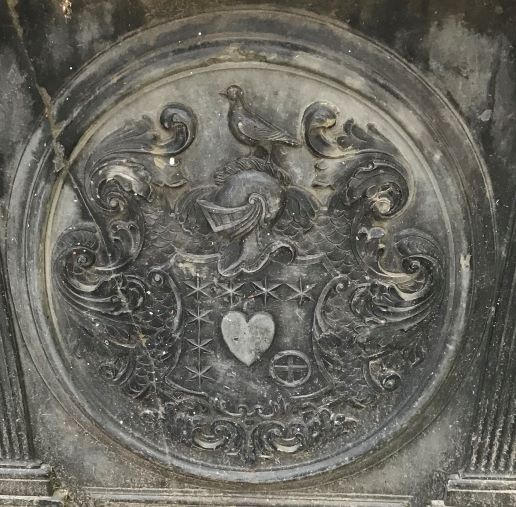
Heart
The heart symbolizes love and may be associated with the Independent Order of the Odd Fellows.
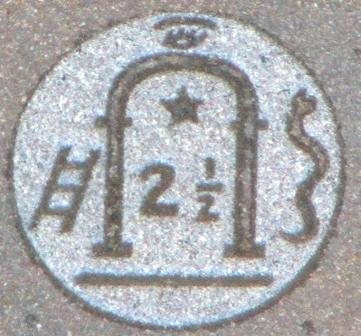
Ladder
Resurrection – stairway to Heaven. In Masonic beliefs, the ladder introduction of Jacob’s Ladder into speculative Masonry is traced to the vision of Jacob, which is recorded in the book of Genesis. A ladder may also represent an occupation – fireman, or membership such as the Orangemen (photo at left.)

Moon or Crescent
Eternity; sign of the second coming. See also Masons, Shriners. The crescent moon with a star is symbolic of the Muslim religion
.

Mourning
There are many beautiful statues in the cemetery depicting mourning or grief.
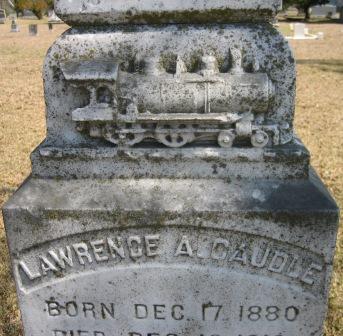
Occupations, Hobbies and other Human Interests
Modern tombstones frequently include symbolism for the occupation, interests, or hobbies of the deceased. This can vary from music, art as well as medical insignia such as the Caduceus.
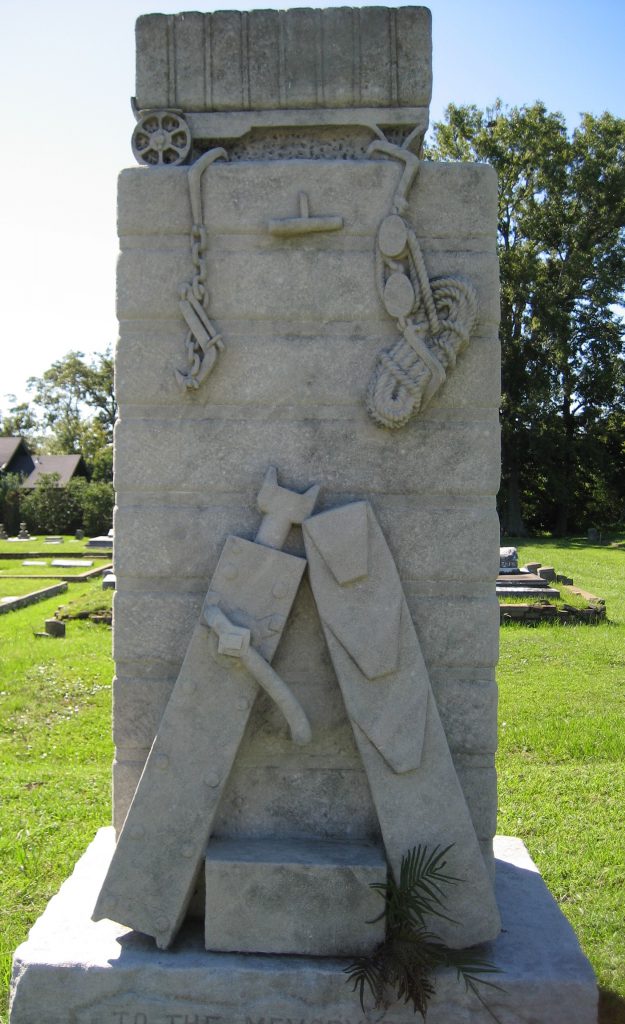
Rope
Binding together, as in a fraternal organization. Sometimes just decorative. The statue at left represents Baymen’s Benevolent Association in the Magnolia Cemetery in Mobile, Alabama.
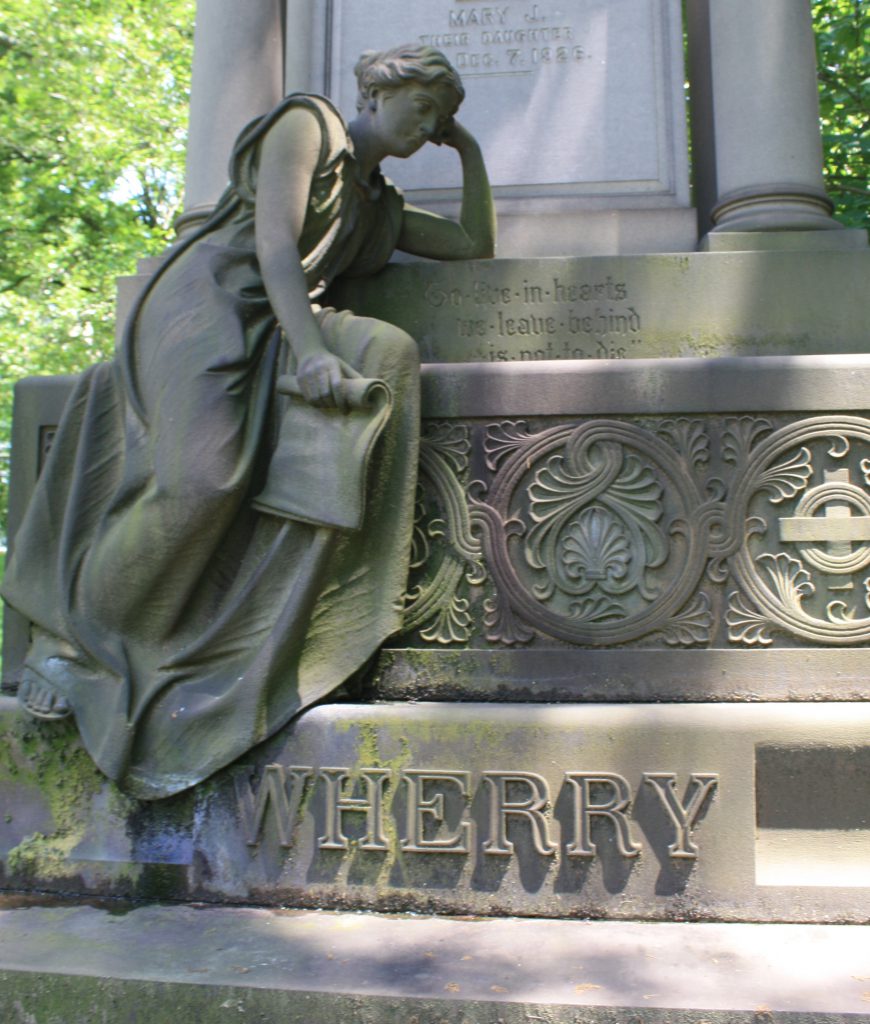
Scroll
Scrolls are sometimes used instead of a book to represent the writings, wisdom or beliefs of the deceased.
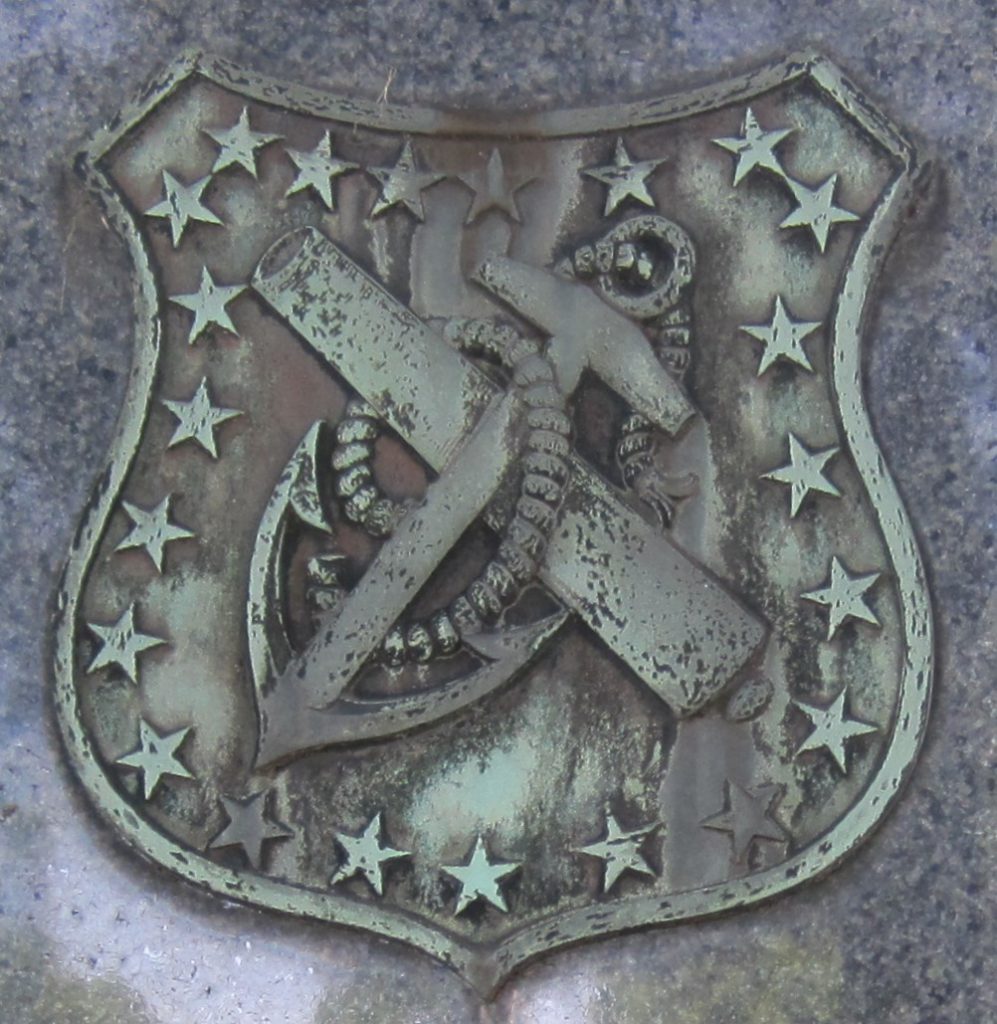
Shield
A shield may be a family crest, or may indicate a soldier’s burial. Union Civil War soldiers typically had their epitaph engraved within a shield.
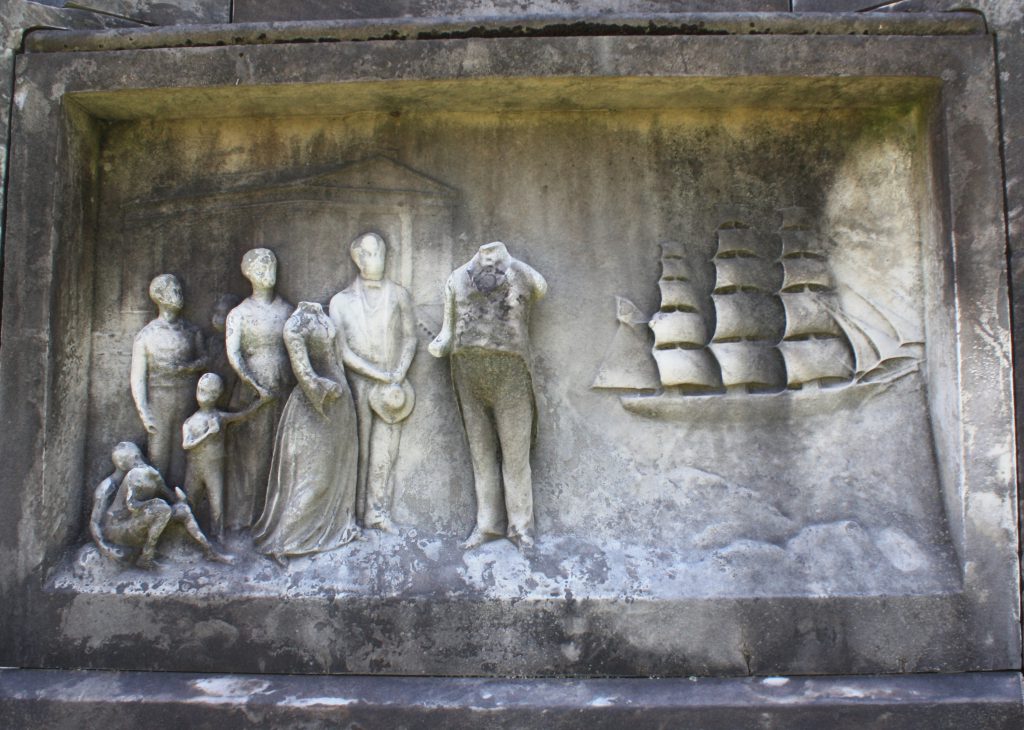
Ship
Ships are generally used to mark a grave of one who led a seafaring life or one that died at sea. Christians also use the symbol to represent passage to afterlife.

Shoes
Shoes may be a symbol of a profession, such as a dancer. Empty shoes may represent the loss of a child.
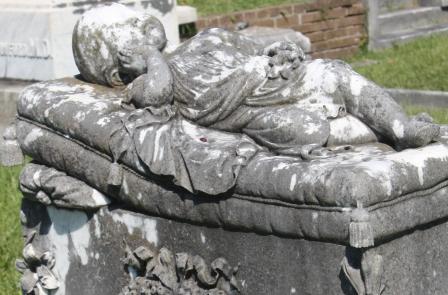
Sleeping
Eternal Rest. A child sleeping is a common Victorian era symbol. A common epitaph, still in use today, is “Only Sleeping.”

Tools
Tools are generally a symbol of the trade of the deceased. The tools at left represent the Workingman’s Timber and Cotton Association in the Magnolia Cemetery in Mobile, Alabama.